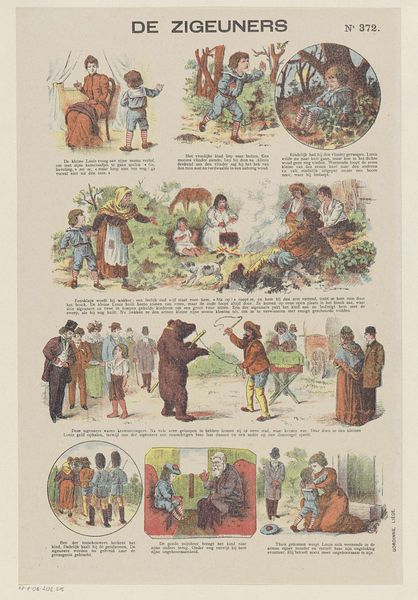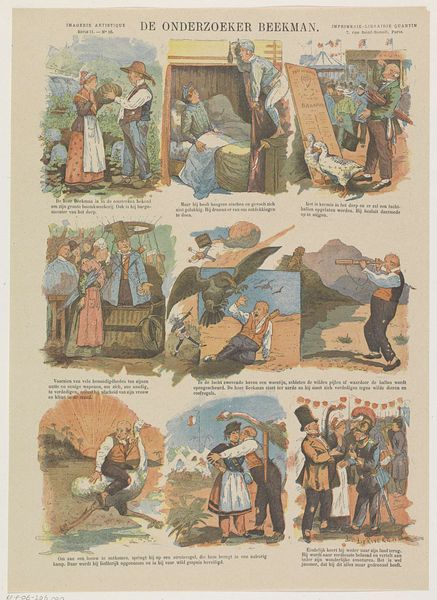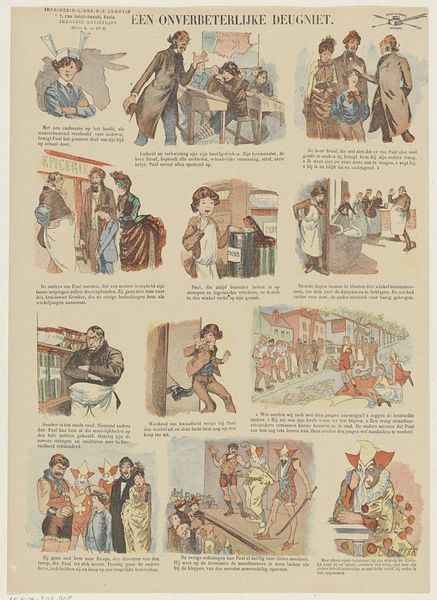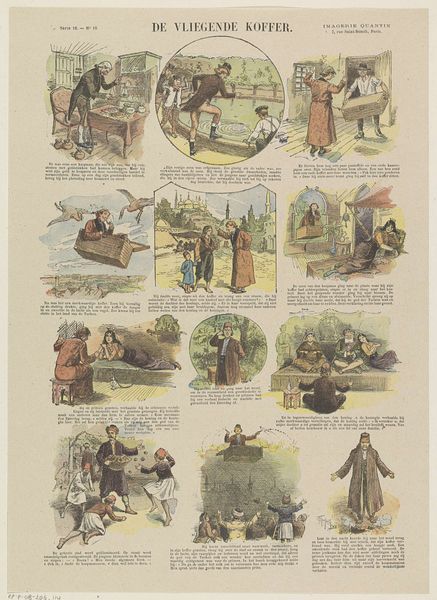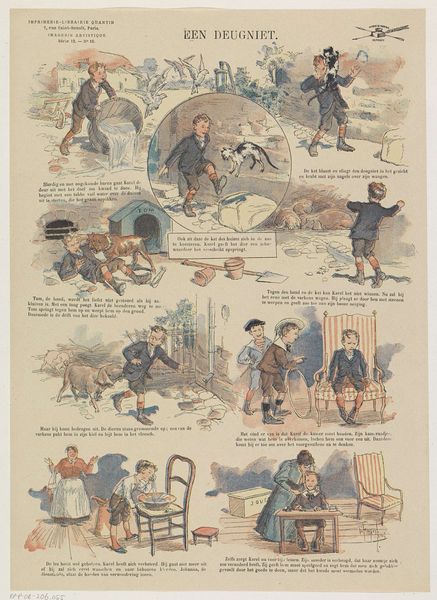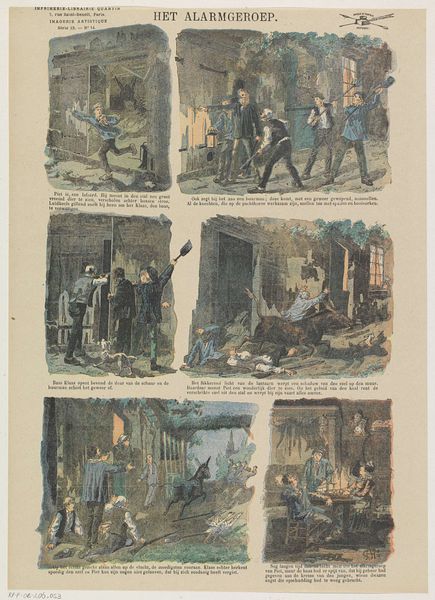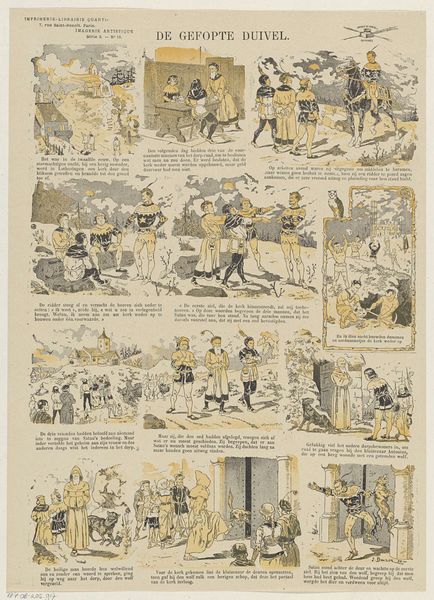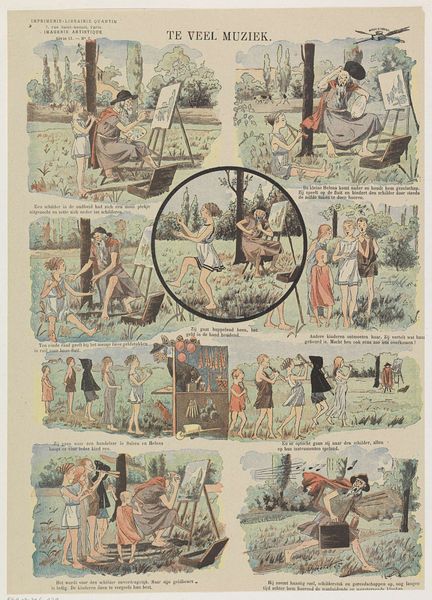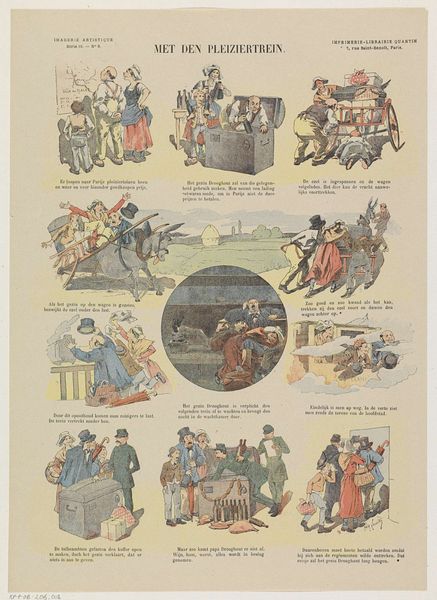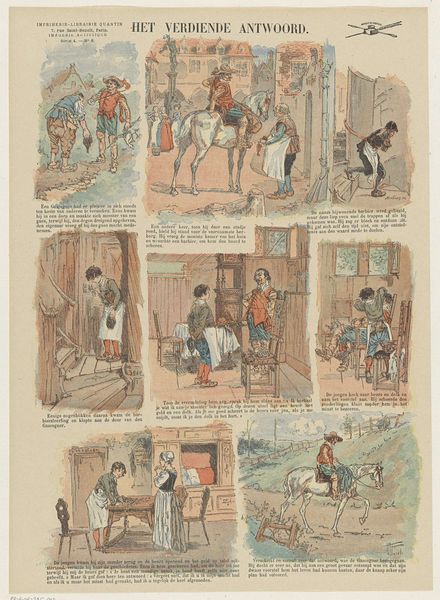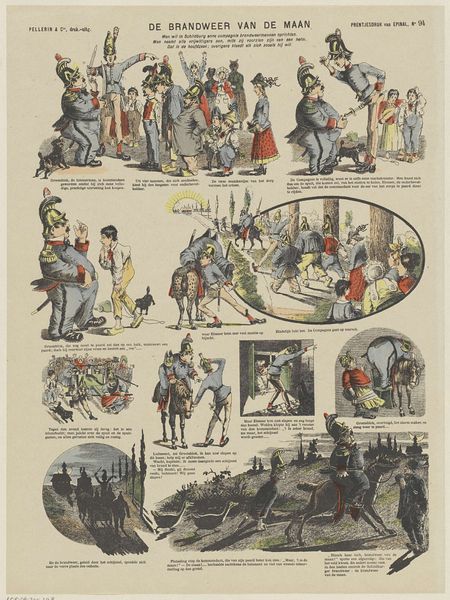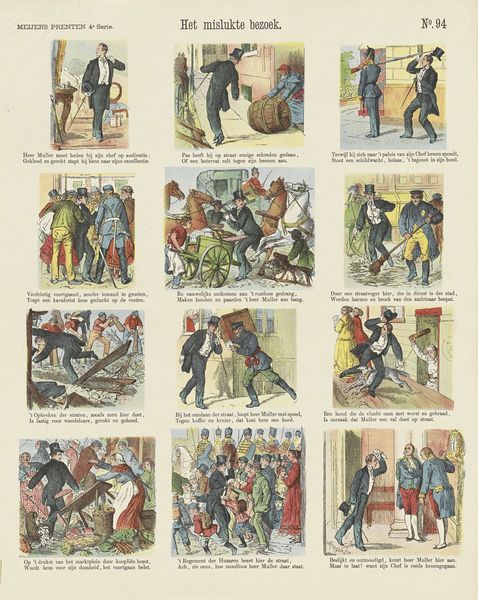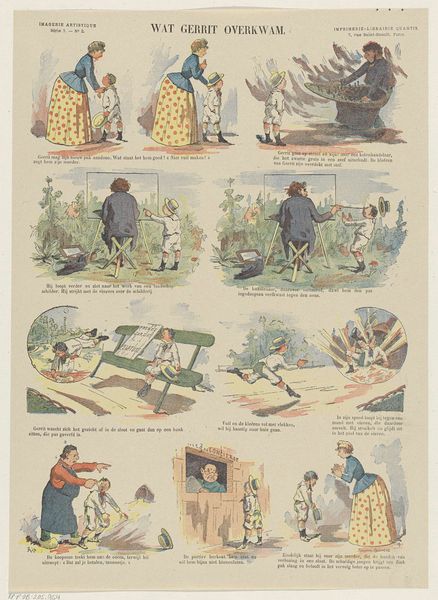
print, etching
#
narrative-art
# print
#
etching
#
genre-painting
Dimensions: height 368 mm, width 264 mm
Copyright: Rijks Museum: Open Domain
Albert Quantin’s undated print, "Ongehoorzaamheid," presents a series of vignettes rendered in delicate lithographic tones. The arrangement, reminiscent of a comic strip, employs both spatial and narrative sequencing to structure its meaning. The eye is drawn across the page, following the children's playful yet disobedient actions and their consequences. The children, initially seen in light-filled, outdoor settings, are eventually enveloped by the encroaching darkness of the forest—a visual metaphor for the deepening consequences of their disobedience. This formal progression—from light to dark, open to closed—illustrates a moral lesson within the visual space of the print. Quantin uses this spatial encoding to reinforce the concept of societal norms and transgressions. The movement from freedom to confinement, and from clarity to obscurity, is not merely aesthetic but reflects the cultural codes related to childhood behavior and discipline. The print ultimately functions as a semiotic system, where each image acts as a signifier, contributing to the overarching theme of obedience and its ramifications.
Comments
No comments
Be the first to comment and join the conversation on the ultimate creative platform.
